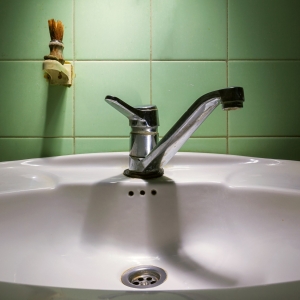The Stream, February 4, 2021: Trump-Era Oil Permits Could Contaminate Drinking Water In New Mexico
YOUR GLOBAL RUNDOWN
- Drilling projects in New Mexico could contaminate drinking water supply.
- Decades of data on water flows in New South Wales prompt conversations about water use and storage.
- A proposal to remove methane from dormant coal mines in North Fork Valley, Colorado could also protect water for local farmers.
- Sudan is warning against the second phase of Ethiopia’s plan to fill the Grand Ethiopian Renaissance Dam.
Residents of Jackson, Michigan are asking their representatives for answers to continued flooding in the area.
“At the end of the day, the way I look at it is we have a problem that, when you look back and look at the forest from the trees, can only be solved by the county. The city is doing everything we can do. It’s not as impactful because we aren’t in charge of owning or maintaining that park.” – Jackson City Councilman Will Forgrave. Residents living near the Cascade Falls Park lagoons in Jackson, Michigan are calling for more to be done about annual flooding in their homes and basements, MLive reports. The county is currently studying the movement of water in the area. It hopes to find solutions to address flooding on private property and nutrient runoff. Residents believe flooding could be caused by water pumped for waterfalls in the park, although officials say other factors like excess rainfall and snowmelt could be contributing factors.
In context: As Water Backs Up, an Asset in Michigan Becomes a Liability
IN RECENT WATER NEWS
U.S Civil Rights Commission Advisers File Report on Water Inequity in Massachusetts
Amid rising municipal water rates and a pandemic that is worsening inequality, a U.S. civil rights advisory committee report argues that Massachusetts should adopt new policies and standards that ensure affordable drinking water access for all.
The Massachusetts Advisory Committee is the first state committee to issue a report on water access and affordability. The commission welcomed the findings, according to Angelia Rorison, its communications director.
In Case You Missed It:
HotSpots H2O: In Ethiopian Conflict, Water Insecurity and Disease Risk Escalate – Destruction to infrastructure in the Tigray region of northern Ethiopia has left people without access to clean water and increased the risk of fatal diseases.
Oil Drilling In New Mexico Could Contaminate Drinking Water
A National Geographic investigation found that the Trump administration’s “energy dominance” agenda could destroy historic cave systems and threatens aquifers that supply drinking water to tens of thousands of homeowners in New Mexico. The investigation found several drilling accidents on land rented out by the Bureau of Land Management between 2017 and 2020. Accidents are likely to increase if oil and gas exploration expands. One permitted project would drill directly through an aquifer that provides drinking water to nearby residents, farmers, and ranchers. BLM leased acreage for the project even though an internal study found evidence that drilling fluids could contaminate water supply.
TODAY’S TOP WATER STORIES, TOLD IN NUMBERS
20 YEARS
ABC News reports that 20 years of records from Water NSW, a water utility in New South Wales, show that climate change has cut water inflows in half. The NSW Irrigators’ Council is now calling for “open and honest” conversations about how water is used and stored. The conversations have been welcomed by the Murray Darling Association. Chief executive officer Emma Bradbury said the move shows maturity in the decisions over water and agriculture that are “based in science.”
20 DORMANT COAL MINES
An entrepreneur in Colorado’s North Folk Valley has put forward a plan to tackle the region’s problem with methane-leaking mines while protecting water for nearby farmers. The Colorado Sun reports that the project, if funded by local and state agencies, would remove sediment that is clogging Paonia Reservoir, a water body that irrigates more than 15,000 acres in the North Folk Valley. The sediment would then be poured into hundreds of leaky portals above miles of dormant coal seams, where methane from the mines could be harvested and used for electricity. Steve Fletcher, the manager of a 35-mile canal that ships Paonia Reservoir water to farmers and ranchers in North Fork Valley, said the project is a good first step in solving the reservoir’s sediment problem, but more work will be needed to fully remediate the issue.
ON THE RADAR
Sudan’s Irrigation Minister Yasser Abbas warned Ethiopia against continuing to fill the Grand Ethiopian Renaissance Dam reservoir without first signing an agreement with stakeholders, Al Jazeera reports. Continued attempts between Sudan, Ethiopia, and Egypt to negotiate the terms of the dam have failed. Egypt and Ethiopia both separately blamed Sudan’s objections to the framework of the talks for the most recent gridlock.
In context: HotSpots H2O: Tensions Rise in Horn of Africa as Ethiopia Fills Controversial Dam
Jane is a Communications Associate for Circle of Blue. She writes The Stream and has covered domestic and international water issues for Circle of Blue. She is a recent graduate of Grand Valley State University, where she studied Multimedia Journalism and Women, Gender and Sexuality Studies. During her time at Grand Valley, she was the host of the Community Service Learning Center podcast Be the Change. Currently based in Grand Rapids, Michigan, Jane enjoys listening to music, reading and spending time outdoors.






Leave a Reply
Want to join the discussion?Feel free to contribute!